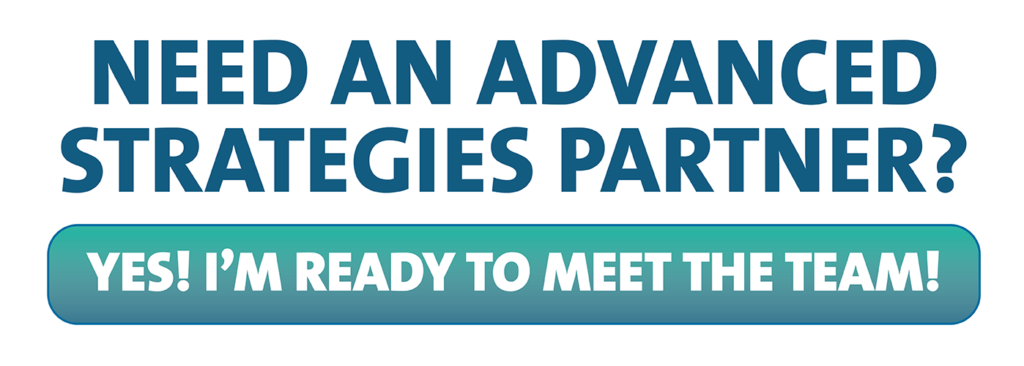Updated September 27, 2023, at 10:40 AM
The job site Indeed lists 16 reasons employees choose to leave their jobs. Those ideas are just a small sampling of reasons, and retaining your top employees typically takes more than a new title and salary. Keeping your employees more closely tied to you is about creating rewards that benefit them while incentivizing their loyalty.
If you have top employees you want to retain long-term, look for ways to meet their family’s financial needs, protect their survivors in the event of death, and ensure their legacies.
43% of employees named life insurance as a top workplace benefit, and 26% are willing to take a job at another company for better benefits, according to 2023 research.
Forbes Advisor
What’s in it for me?
Well-prepared employers structure incentive plans providing the benefits wanted by employees. Some incentive plans also provide a current income tax deduction to the company. This can be particularly attractive for employers structured as a pass-through tax entity such as an LLC, S corporation, or partnership.
Beyond salary and promotion, what are the options?
Executive bonus arrangements (EBA), death benefit only plans (DBOP), and key person life insurance (KPLI) are some of the best options to foster loyalty.
These plans offer flexible, cost-efficient ways to incentivize, compensate, and foster loyalty with key employees. Implementing one of these options enables the company to provide key employee coverage for the business with minimal impact on the company’s balance sheet.
Related: Succession Planning for Family Business: Estate Equalization [Using Life Insurance]
Executive Bonus Arrangements
The EBA option is a clear example of thinking outside the box. Employers use this plan to differentiate themselves from the competition, which typically only provides employees with cash bonuses. EBAs provide additional benefits such as (1) meaningful life insurance coverage for the employee’s beneficiaries, (2) tax-deferred accumulation for the employee’s money, (3) tax-free retirement income for the employee, and (4) a current income tax deduction for the employer during funding years.[i]
How the EBA Arrangement Works Pre-Retirement
The employee purchases and owns a permanent life insurance policy which is funded by the employer. The employee pays income tax on the annual premium payments, and the employer receives a corresponding income-tax deduction. As an added benefit, the employer can provide an annual cash bonus for the employee’s payment of income taxes (a double bonus plan).
The policy’s cash value grows tax-deferred for the employee’s use during retirement, and the death benefit provides protection for the employee’s family.
How the EBA Arrangement Works During Retirement
The employee can access the policy’s cash value income-tax-free for supplemental retirement income while maintaining some level of the death benefit for continued beneficiary security. Alternatively, if the employee doesn’t need the supplemental income, the policy can be transferred to an irrevocable trust for better estate planning protection.
The employer is no longer paying any premiums and is no longer involved in the planning or the policy.
An Alternative: Restricted Executive Bonus Plan
If the employer wants to add some self-protection to the plan, they can limit the employee’s access to the policy’s cash value. This restriction controls the employee’s ability to take cash from the policy for a specified time period (i.e., number of years or attained age).
This can protect the employer from the employee departing and then using the policy’s cash values to compete against the employer. The restriction doesn’t cause the benefit to be forfeited but instead protects the employer by limiting the employee’s access to the policy’s cash value.
Employer benefits:
- Annual bonus is typically deductible
- Arrangement doesn’t need to be prequalified by the IRS
- Employer chooses which employees to include
- Bonus can be different for each employee
- Can be used to attract new top employees
Employee benefits:
- Employees owns the policy and has all rights of ownership
- Meaningful death benefit coverage for beneficiaries
- Cash value accessible for retirement income
- Limited out-of-pocket expense during working years
Death Benefit Only Plan
A business-owned DBO plan has the potential to create a win-win situation for both employer and the employee.
The employee wins because this plan can protect their beneficiaries with substantial death benefit coverage for no out-of-pocket cost. The second win benefits the employer as the employee needs to remain with the employer to receive the benefit.
How the DBO Arrangement Works in Retirement
The employer purchases and owns a key person permanent life policy on the life of the employee and pays the premium (payments aren’t deductible[ii]). The employer then agrees to share a portion of the policy’s death benefit with the employee who has designated the beneficiary. The employer retains the remainder of the death benefit as key person indemnification.
This arrangement is cost-neutral to the employee’s cash flow while they’re covered.
If the employee dies while the agreement in is effect, the employer receives the death benefit free of income taxes for the key person coverage and other costs in the plan. However, when the designated beneficiary receives the death benefit proceeds, it’ll be taxable to them.[iii]
The employer will receive a corresponding tax deduction. (An alternative arrangement that provides a tax-free death benefit is an endorsement split-dollar plan). The agreement is terminated when the employee separates from service with the employer (i.e. Retires or otherwise is no longer an active employee).
Related: AG 49-B & Life Insurance Illustrations: What You Need to Know
Key Person Life Insurance
A KPLI plan compensates a business for financial loss arising from a top employee’s death or disability. It provides the funds necessary for the business to continue operations—where without the funds, it may otherwise fail. The company is named the owner and beneficiary of the policy and pays the premiums for insuring the employee.
Taxation and Other Advantages
When it comes to taxation, the benefits under a KPLI policy are received income tax-free by the business.[iv] Premiums paid for life insurance for key person purposes generally aren’t tax deductible.[v]
KPLI provides peace of mind by way of knowing the business will continue operations following the loss of a top employee. The company also benefits by way of:
- Offsetting revenue loss
- Financing for recruiting and training a replacement
- Assisting with maintaining credit ratings
Determining Valuation for a Key Person
Putting a precise dollar amount on the value a key person brings to an organization may be challenging. There are three generally accepted estimation methods available:
- Multiples of Compensation
Multiples between 2x and 10x have been used throughout the life insurance industry. The nature of the key person’s services should be considered, the top executives being insured for a multiple at the top of the range.
- Cost of Replacement
This method factors in all facets of locating, hiring, and training a replacement. It includes recruitment costs such as advertising for the open position and an allowance for additional compensation required to attract the desired candidate. Cost of replacement is generally used when skilled applicants are plentiful, and the business does not anticipate a lengthy search for a replacement.
- Contribution to Profits
This method multiplies the estimated revenue generation potential of the key person by the amount of time it’ll take to locate, hire, and train a replacement. This is the most used method for salespeople. An average of sales revenue generated in the past 3-5 years is used. This number is multiplied by the number of years that’ll elapse before the revenue generation is replaced.
Continue Reading: 5 Factors That Build Incredible Financial Advisor Seminars
Assisting your business-owner clients with options for additional benefits can result in win-win-win (advisor-owner-employee) solutions for everyone!
At Financial Independence Group, we’ve built an Advanced Strategies team that can partner with financial professionals to illustrate case design options for your most complex financial situations. Click to connect with us and receive a FREE download of our Premium Finance Toolkit.
The content within this video is for educational purposes only and does not represent legal, tax or investment advice. Customers should consult a legal or tax professional regarding their own situation. This video presentation is not an offer to purchase, sell, replace, or exchange any financial product. Insurance products and any related guarantees, features and/or benefits are backed by the claims paying ability of an insurance company. Insurance policy applications are vetted through an underwriting process set forth by the issuing insurance company. Some applications may not be accepted based upon adverse underwriting results.
[i] Assuming compensation is reasonable under IRC §162.
[ii] Internal Revenue Code §264
[iii] The benefit is taxable as “income in respect of a decedent” and is deductible to the employer
[iv] Internal Revenue Code §101(j)
[v] Internal Revenue Code §264


